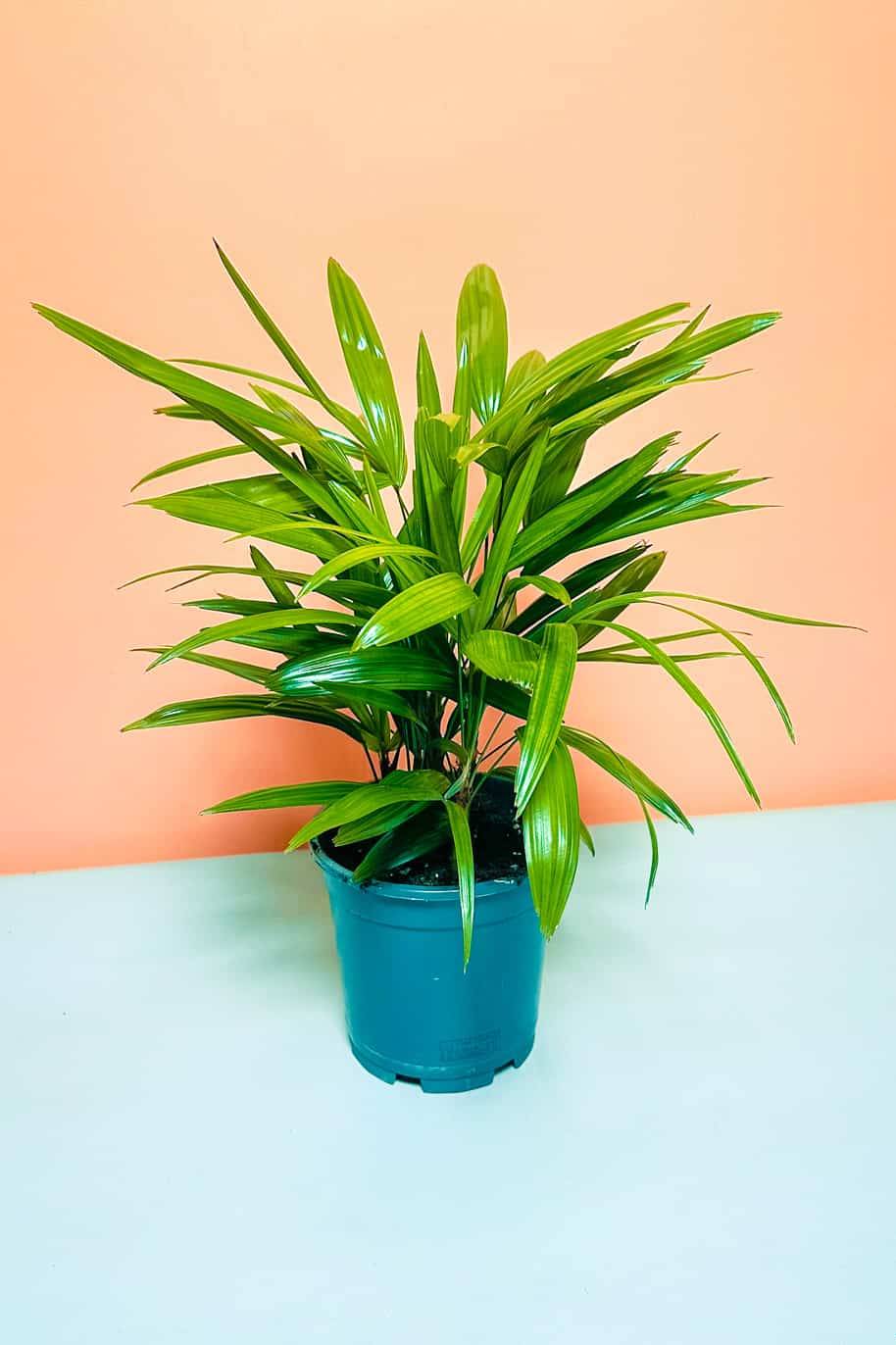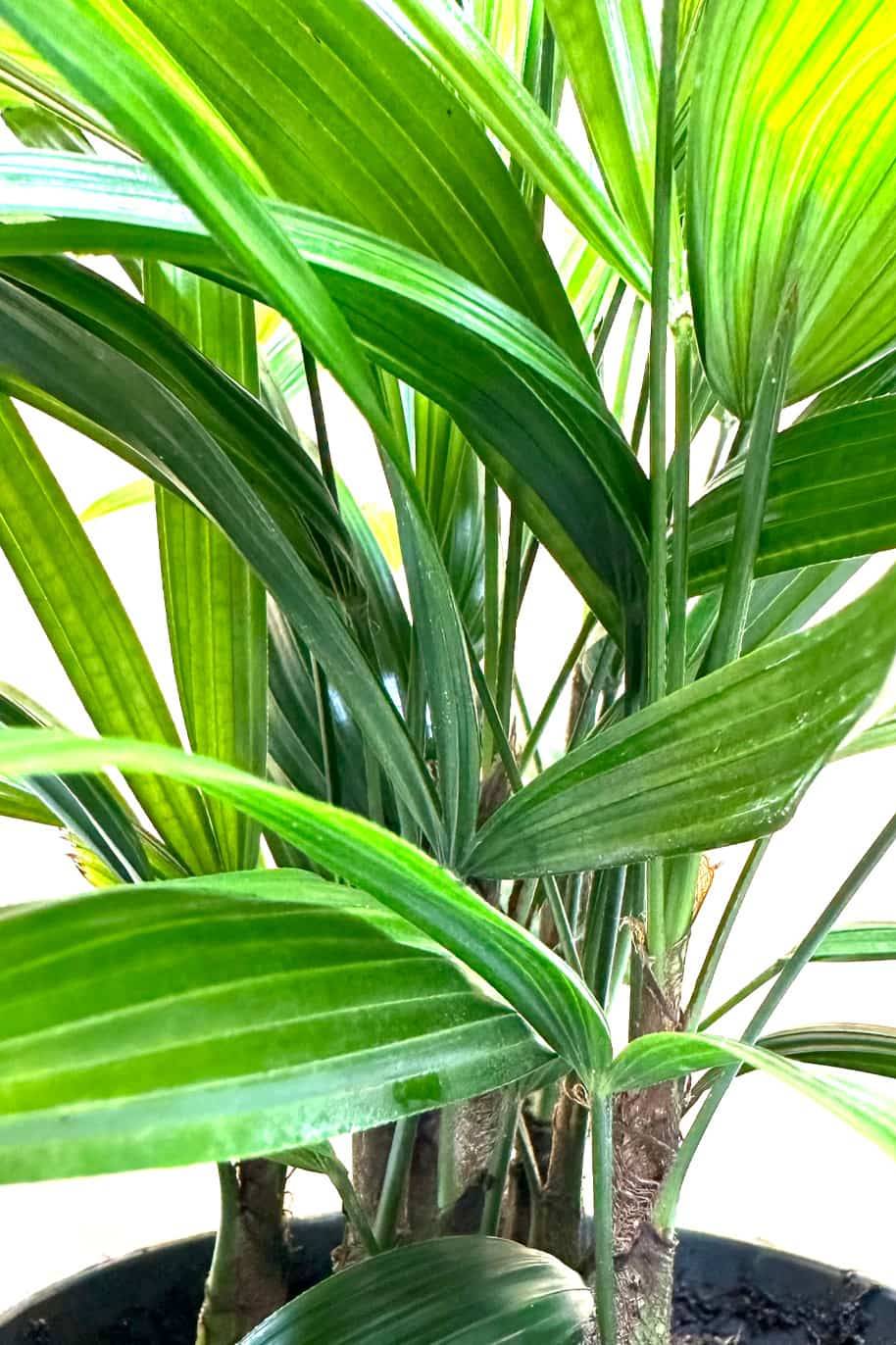Plant Bio
A lady palm is a broadleaf member of the palm tree family (Arecaceae) growing naturally in tropical and subtropical climates. It is also known as a bamboo palm for its bamboo-like stalks that grow individual, fan-shaped palm fronds made of narrow spikes. Lady palms propagate through underground rhizome offshoots that create extensive underground root systems for the plant.
Lady palms are popular house plants because they don’t require much care and can adapt to nearly any conditions. Lady palms can grow as tall as 14 feet or remain as short as two, making them suitable on tabletops, or as free-standing tropical accents. The lady palm is also a very slow grower so there’s no need to continually change pots or location.
Broadleaf lady palms are fairly hardy and resilient plants. Follow these tips to help your lady palm thrive.
1. Prune your lady palm occasionally. As the lady palm ages, its lower leaves will begin to discolor and die. It is best to prune these before they fall off, because this can leave scars on the plant’s stems. Check for newly-formed stalks that fail to mature and prune them off so they don’t damage your tree’s trunk.
2. Make sure your palm is getting enough water. Rhapis palms are very low-maintenance, but you might notice brown tips on its leaves if you don’t water it enough. Be careful not to over-water your palm though, because this can lead to root rot. Water your lady palm when the soil becomes dry to a depth of two inches.
3. Monitor your light. Lady palms thrive best in bright, indirect light and they are also very tolerant of low light conditions. If your lady palm isn’t growing, try rotating your plant’s pot to expose all of its sides to the sun.
4. Watch out for pests and fungi. Mealybugs and spider mites will often hide in the fibrous bases of lady palm leaves, making them difficult to spot and reach. For the best protection, use a systemic insecticide and avoid spraying, as it damages the leaves. While rhapis are resistant to most pathogens, Fusarium oxysporum, Penicillium, and other root rots can occur.









